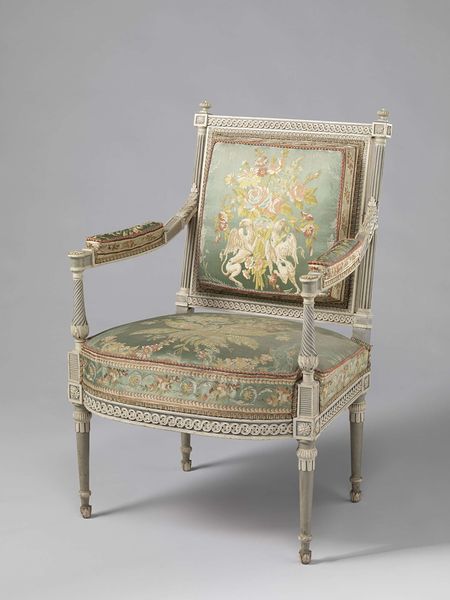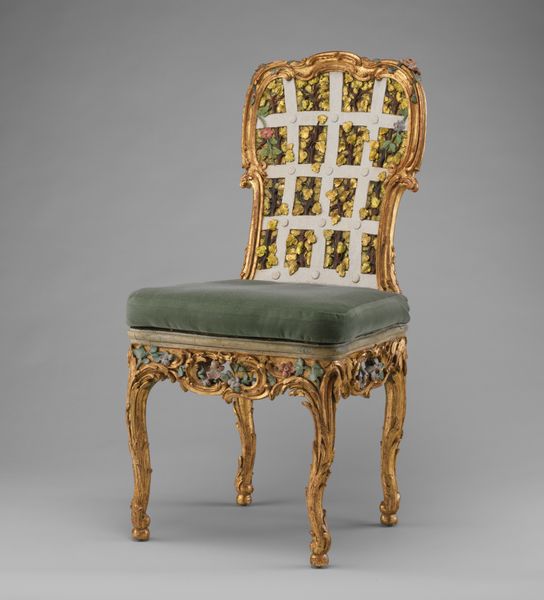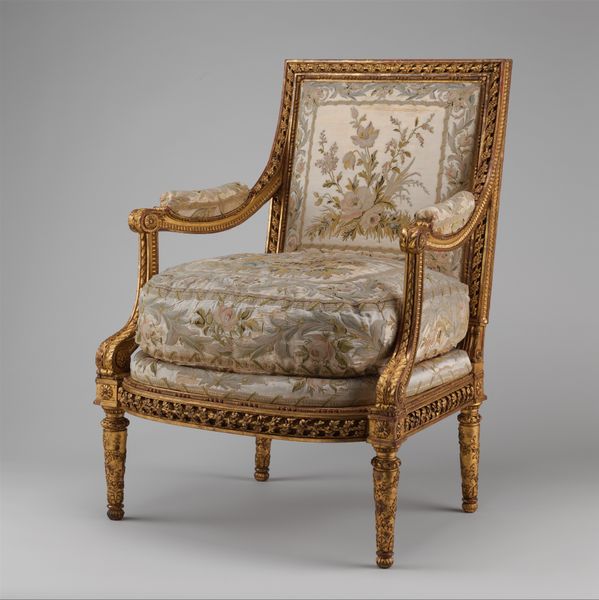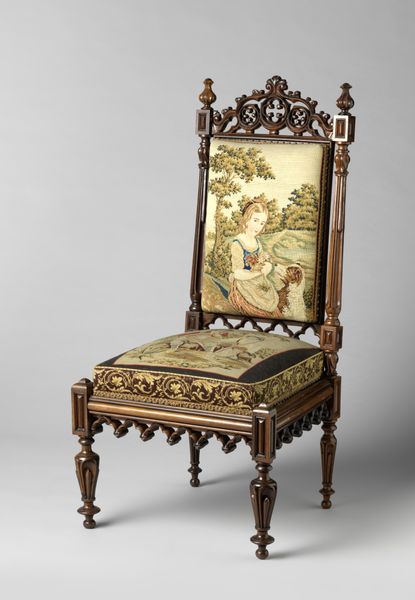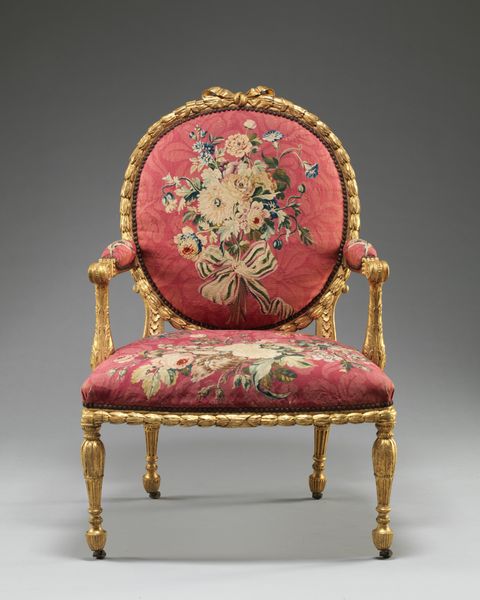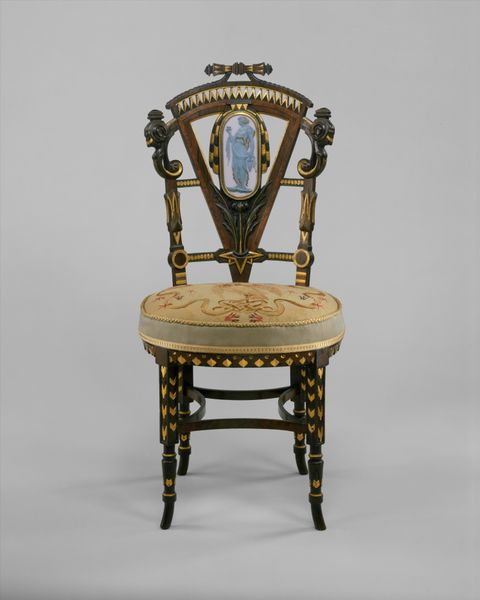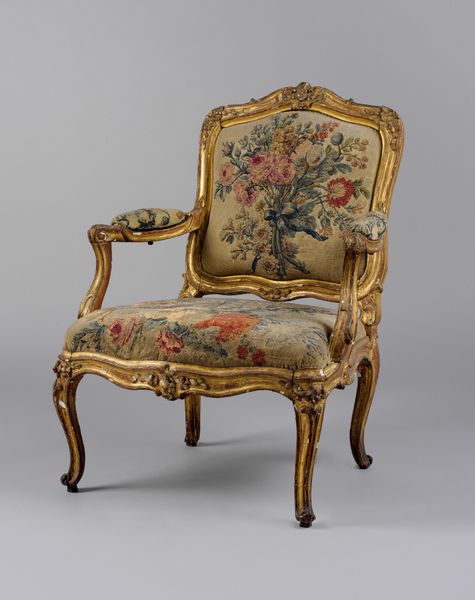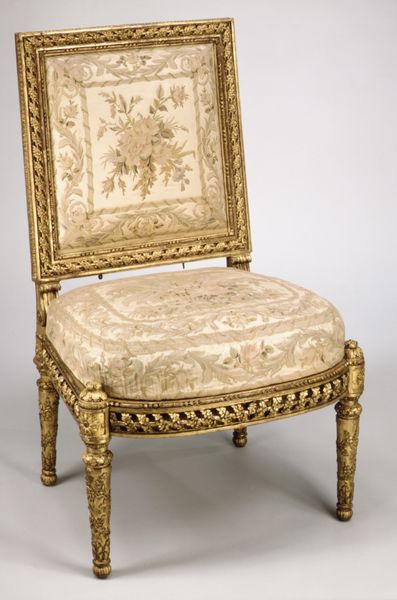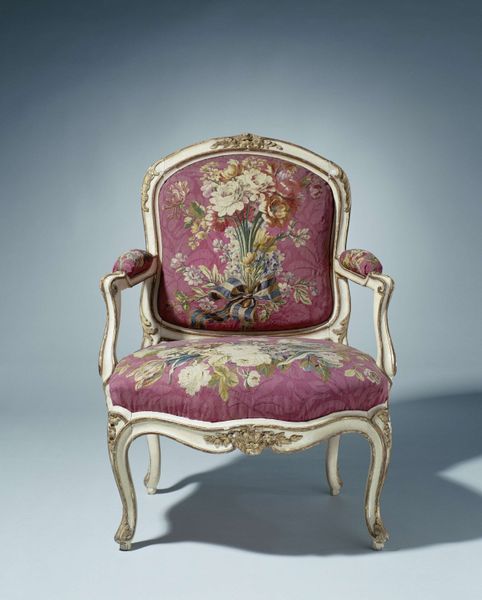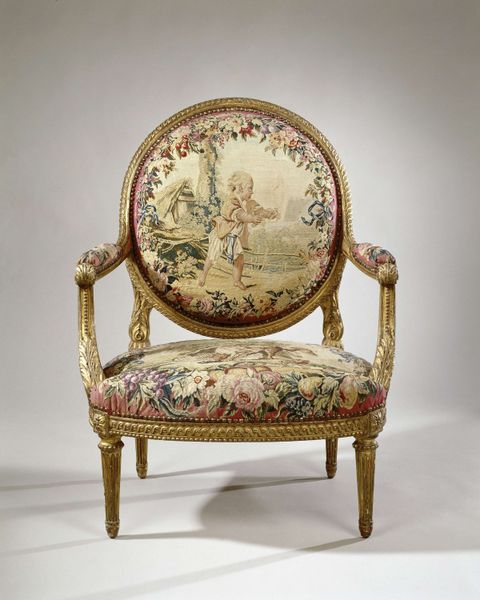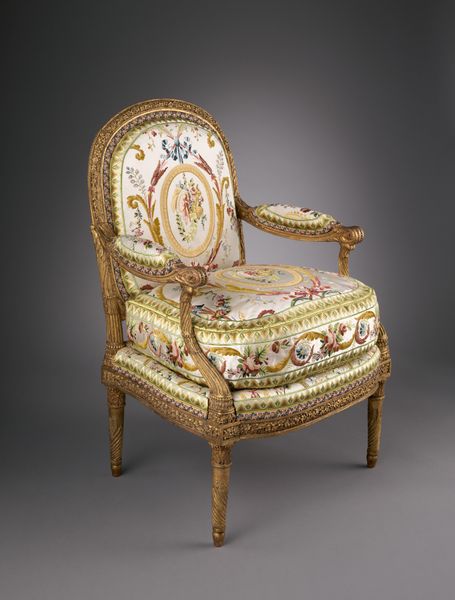
textile, wood
#
portrait
#
neoclacissism
#
furniture
#
textile
#
wood
#
decorative-art
Dimensions: height 93.5 cm, width 49 cm, depth 52.5 cm, height 50 cm, width 49 cm, depth 39 cm
Copyright: Rijks Museum: Open Domain
Curator: Here we have an example of decorative art, a chair titled "Stoel Kops-ameublement," made around 1793 to 1795. The wood frame supports textile coverings for both the seat and back. Editor: It’s beautiful. A bit austere, perhaps, but also incredibly elegant. The pale colors and delicate detailing create a really serene visual. Curator: It reflects the Neoclassical movement, channeling classical antiquity and ideas from the Enlightenment in both form and decoration. Looking at this piece, what associations spring to mind in regards to 18th century socio-political changes? Editor: I find myself thinking about power and class. I mean, it is a chair. Who sat in it, and what did that signify about the owner’s social standing? The decorative tapestry scenes seem pastoral, a nostalgic retreat from the rising social tensions of the era and possibly also obscuring labor and gender inequities. Were these angelic figures an acceptable form of escapism or did it become another form of the ruling class flaunting access? Curator: Those decorative scenes definitely evoke an elite lifestyle removed from the growing social unrest of the time. They suggest a return to order, decorum, and idealization during a revolutionary era. We should not shy away from acknowledging it is through these tapestries we witness their access to capitalistic endeavors. Editor: Right. The symbolism employed really needs some teasing out. A comfortable chair positioned at the precipice of revolution embodies a narrative ripe for reassessment through a contemporary theoretical lens. Even the medium is interesting—textiles would often have been the work of women or other groups deemed insignificant during the time. Did making tapestries allow access and agency, even though minor and/or temporary, to rise through the social hierarchies? Curator: That is a great point to reflect upon and I will add, this exploration of identity and positionality—even within something as seemingly simple as a chair—reminds us that even decorative arts can embody complex historical and social dialogues. Editor: Precisely. Art holds social commentary even when just meant for relaxation, an ideal place of reflection!
Comments
No comments
Be the first to comment and join the conversation on the ultimate creative platform.

